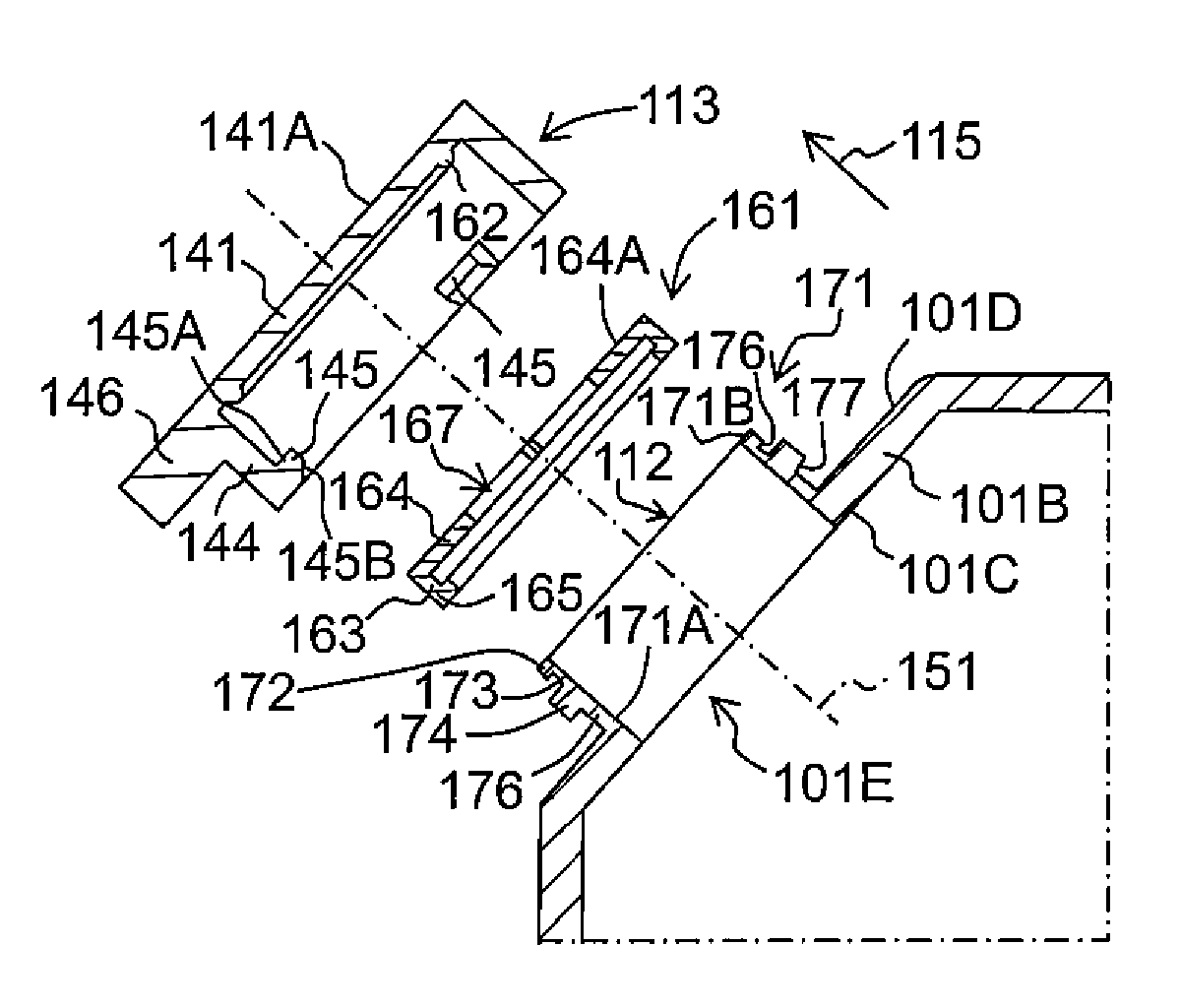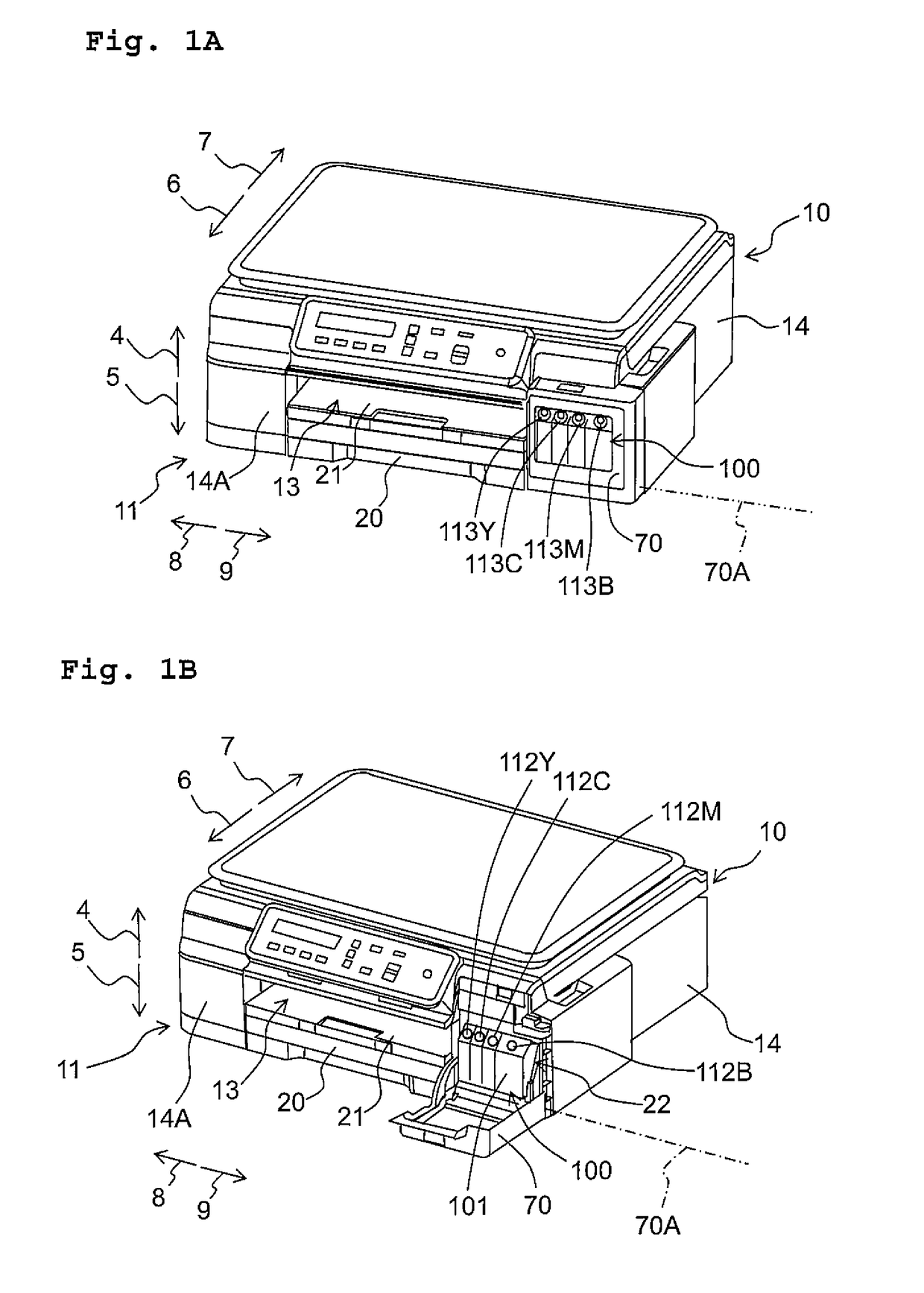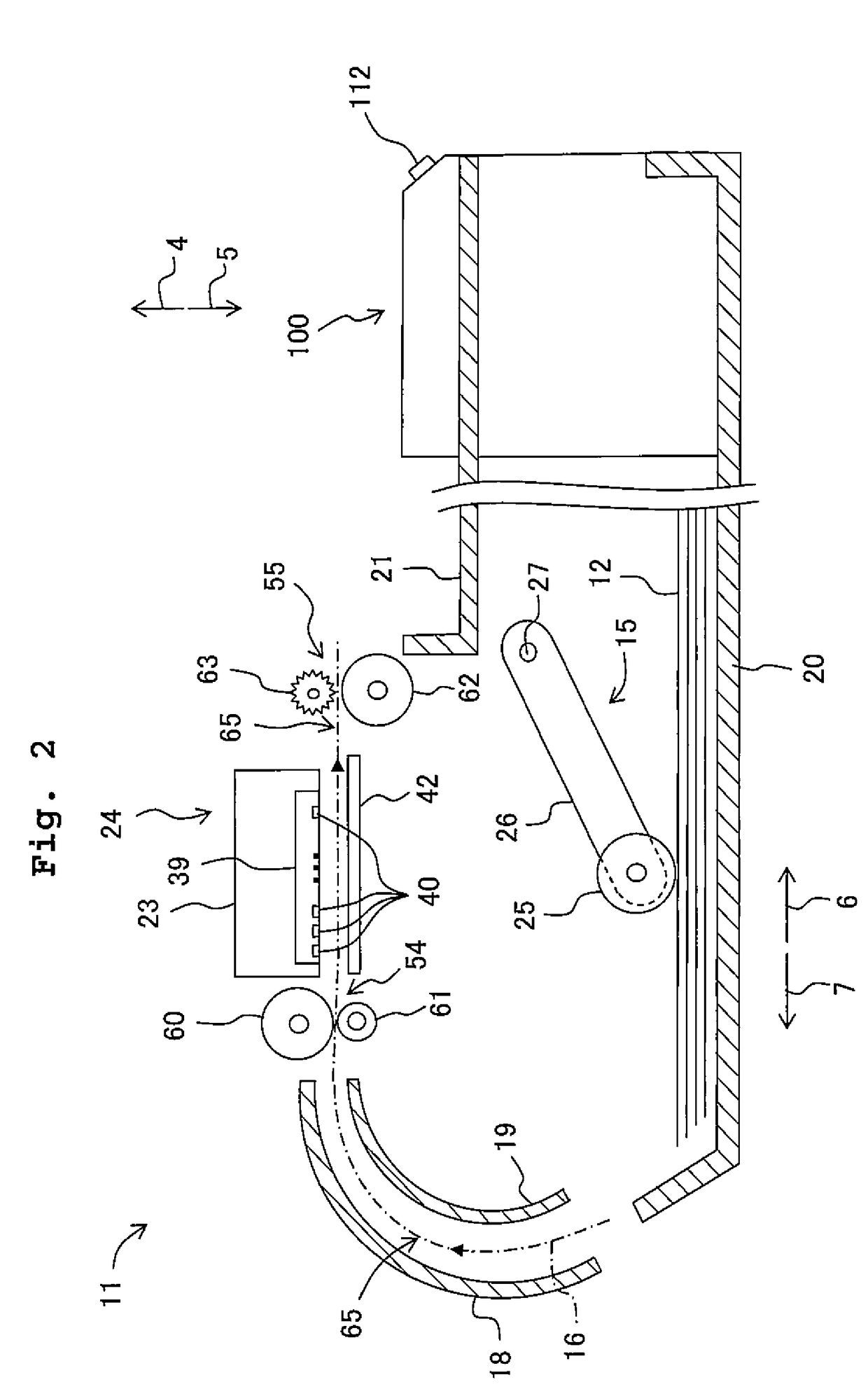Tank
a tank and cap technology, applied in the field of tanks, can solve the problems of small force by which the cap which has been elastically deformed returns to its original shape, and the cap installed in the inlet port might be inadvertently or unintentionally detached or come off from the inlet port, and achieve the effect of suppressing any liquid scattering
- Summary
- Abstract
- Description
- Claims
- Application Information
AI Technical Summary
Benefits of technology
Problems solved by technology
Method used
Image
Examples
second embodiment
[0155]In the above-described second embodiment, the engaging portions 202 may be provided with stopper portions, respectively, in order to stop the rotation of the cap 191 at a position at which each of the engaging portions 202 and one of the stoppers 197 do not face each other in the first direction 155. For example, the stopper portions are provided so as to project, in the first direction 155 and in the direction opposite to the first direction 155, from the side end edge portions 202B in a first rotational direction 230 in the circumferential direction of the respective engaging portions 202. The stopper portions each have a plane parallel to the central axis line 151.
[0156]In a case of attaching the cap 191 to the inlet port 192, the user presses the cap 191 toward the inlet port 192 until the stoppers 197 abut against the engaging portions 202, respectively, and then the user rotates the cap 191 in a direction opposite to the first rotational direction 230 about the central a...
third embodiment
[0166]The shape of the outer circumferential surface of the cylindrical wall 121 of the inlet port 112 in the third embodiment is not particularly limited, and the outer circumferential surface of the cylindrical wall 121 may have any shape.
[0167]In a case of attaching the cap 210 to the inlet port 112, the user presses the cap 210 toward the inlet port 112 such that the insertion portion 212 is inserted inside the inlet port 112. In this situation, the inner guide surface 121C of the cylindrical wall 121 abuts against (contacts) the guide surface 214B of each of the stoppers 214 while a force moving the cap 210 in the direction opposite to the first direction 155 is applied to the cap 210. With this, the stoppers 214 are elastically deformed to be compressed to the inside of the radial directions of the cylindrical wall 121 and the inlet port 112, and the insertion portion 212 and the seal portion 213 are elastically deformed such that the diameters of the insertion portion 212 and...
PUM
 Login to View More
Login to View More Abstract
Description
Claims
Application Information
 Login to View More
Login to View More - R&D
- Intellectual Property
- Life Sciences
- Materials
- Tech Scout
- Unparalleled Data Quality
- Higher Quality Content
- 60% Fewer Hallucinations
Browse by: Latest US Patents, China's latest patents, Technical Efficacy Thesaurus, Application Domain, Technology Topic, Popular Technical Reports.
© 2025 PatSnap. All rights reserved.Legal|Privacy policy|Modern Slavery Act Transparency Statement|Sitemap|About US| Contact US: help@patsnap.com



